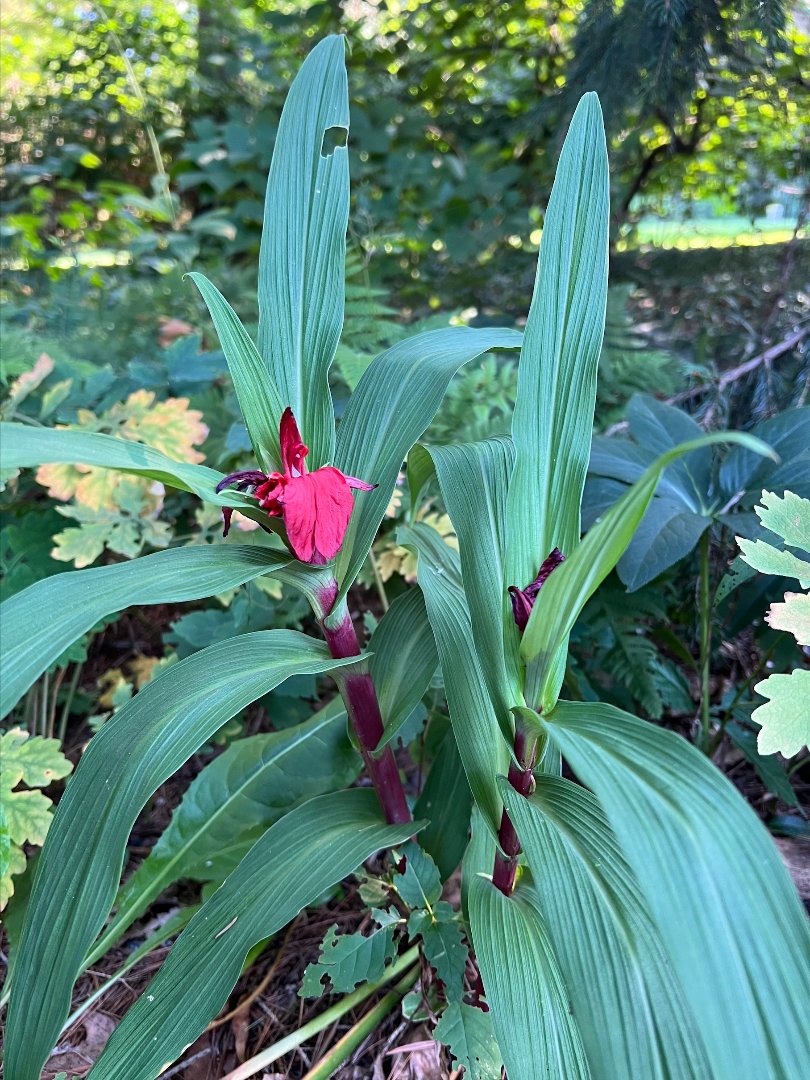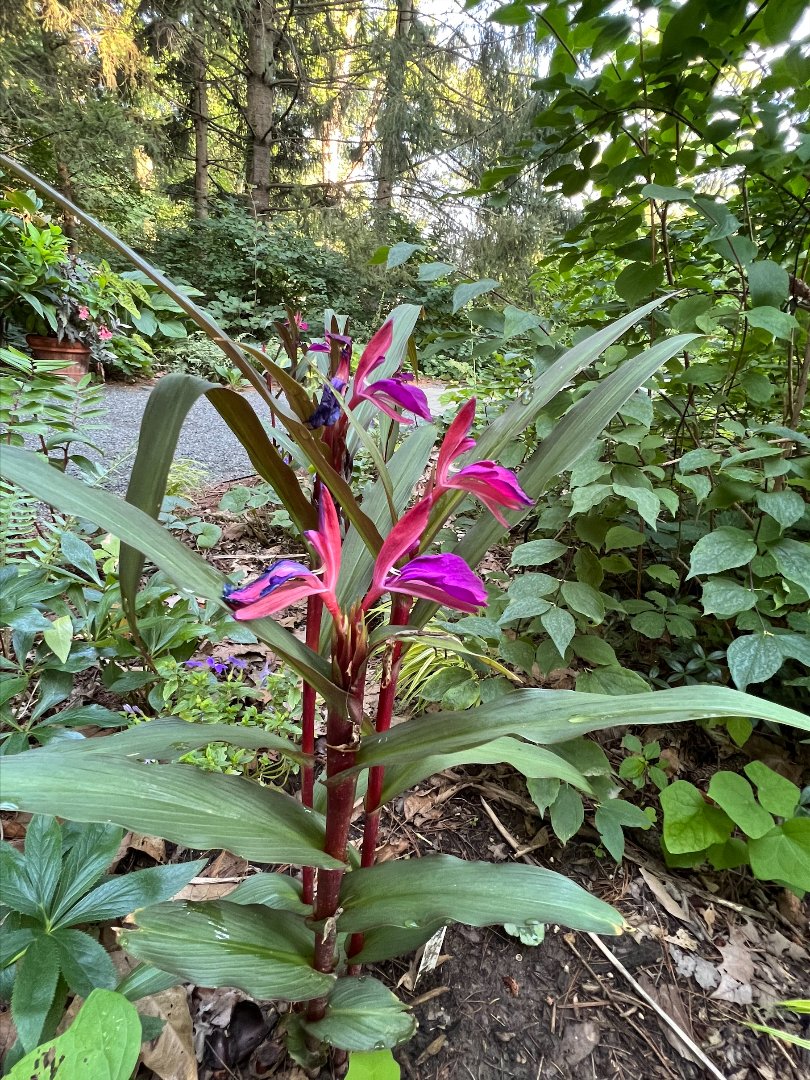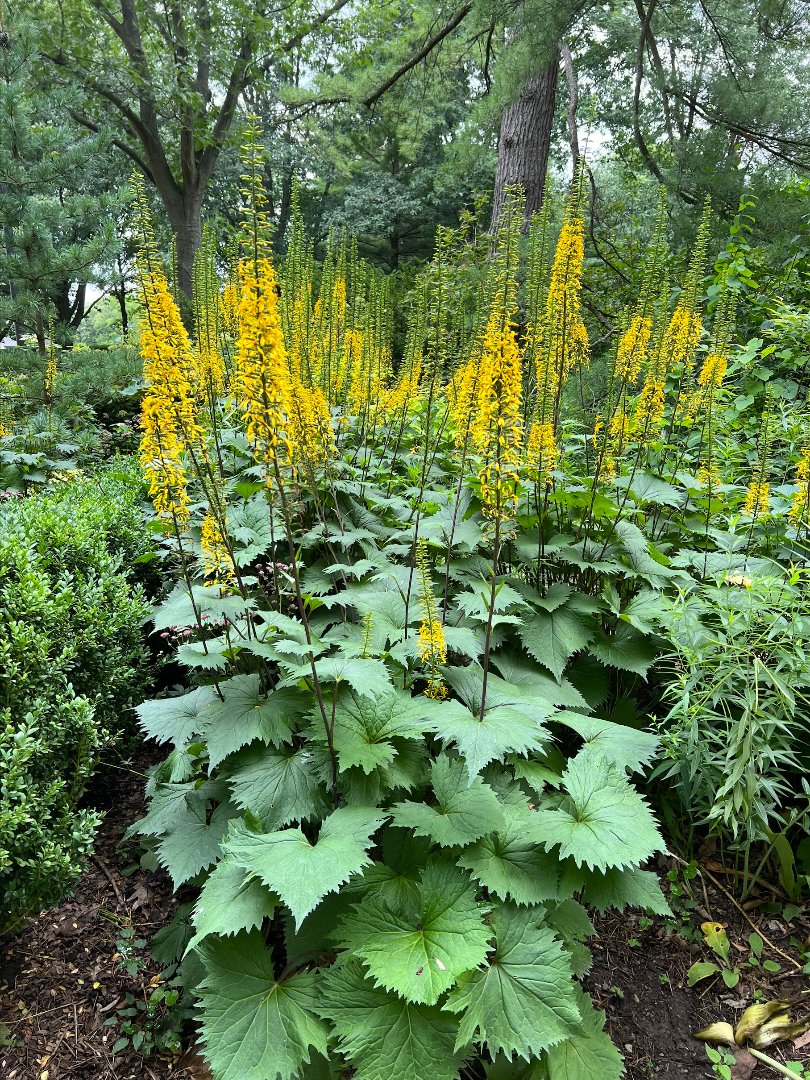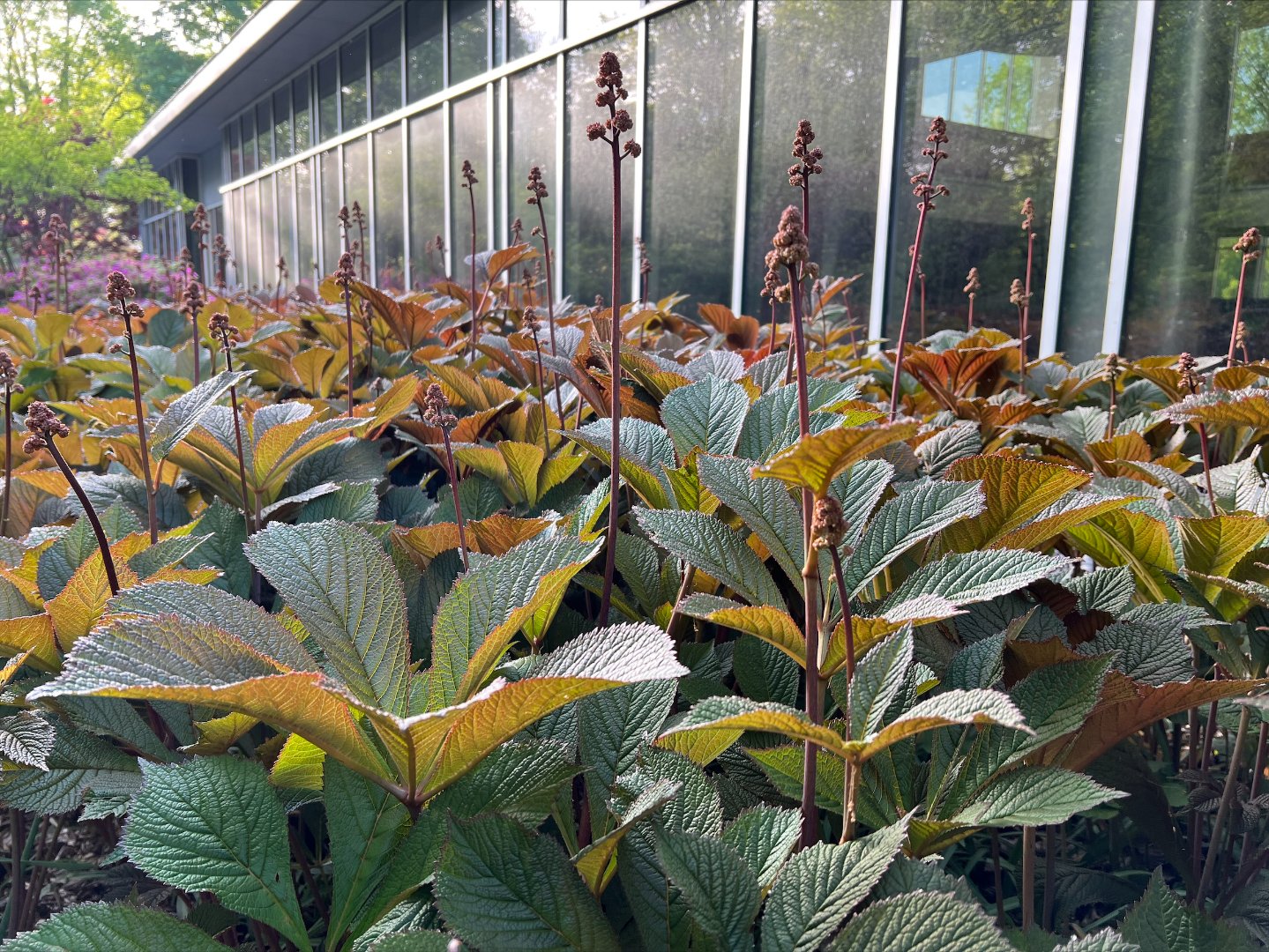Hot in the Shade
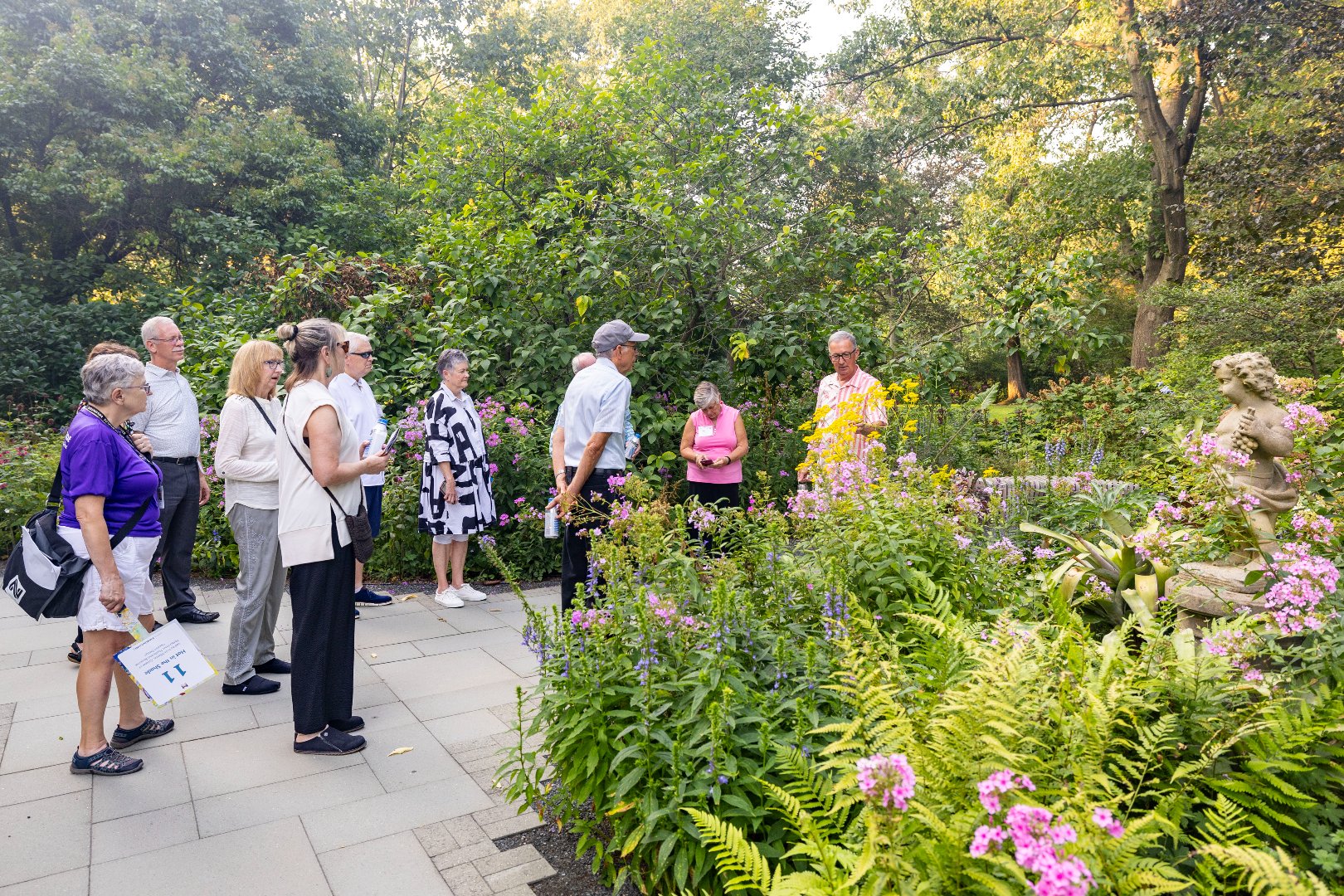
It’s summer. And it’s hot. Though, actually this summer has not been bad. Only a couple periods in the 90s and thankfully none of the heat horror striking the Pacific Northwest. And the Southwest. And the Southeast. Take comfort where you can find it. But still. It’s summer. And it’s hot. And you know where it is really hot? Out in the full sun. Even when temps are “normal” that sun will cook you. I think it bothers me more with age. Or maybe with age I have less tolerance for discomfort. The thing is I need heat AND full sun for my favorite plants—bananas, cannas, all matter of tropicals, and hardy tropical-looking plants. Lower temps and shade mean higher comfort for me, but less growth for tropical plants. And I like my plants BIG.
Don’t get me wrong. I don’t hate shade. It’s just that shade forces me to adjust my plant desires and at a certain age the only thing you want adjusted is your back. But adjust one does. My new home garden has little shade but I’m slowly developing a shade bed under my mature sugar maple.
Newfields thankfully has multiple beautiful shade gardens. None of them are my areas. I abandoned my shade areas nearly 20 years ago when the opportunity to design and develop the new gardens around the IMA building came about. But I still get to stroll through our shade gardens and enjoy the hard work of my colleagues.
Hostas and ferns are perhaps the most traditional of all traditional shade plants. And folks should not be shamed for planting them. New gardeners need some successes and hostas are almost a guarantee as are Japanese painted ferns (Athyrium nipponicum plus cultivars) and our native ostrich fern (Matteuccia struthiopteris, pictured below the title of this article). If a person has success with easier plants, then they get the confidence to experiment with species a little more needy. Over time both the garden and the gardener grow. Time and experience allow you to go from shade gardening to what we might call hot shade gardening.
"Over time both the garden and the gardener grow."
Now, hot shade can be achieved in a couple of ways. There is a whole group of tropicals that do fine in the shade. Most of your houseplants make great shade garden plants. That sad philodendron that has spent the last two years languishing in the spare bedroom could use a summer vacation outdoors. Put it on a little stand and watch it turn into its true lush self. The Phalaenopsis orchid you bought for $8.99 at Aldi, you know the one I’m talking about—don’t act like you don’t. Put it outside for the summer and it is likely to reward you with new flowers next winter without repotting or fertilizing. And if you decide to step out on the edge of gardening with me you can buy tropicals to plant in the ground amongst the perennials and woody plants.
Of course, I know the vast majority of folks do not want to step out on the edge with me. And that is fine. You can heat up your shade garden with some perfectly hardy plants that look tropical. Senior Horticulturist Patty Schneider included some examples in the newly redesigned Katharine B. Sutphin Border Garden. Here you will find relatives of tropical gingers that are perfectly hardy in central Indiana. Myoga or Japanese ginger (Zingiber mioga) is a great foliage plant for shade. The variegated cultivar has wonderful white striping in its long narrow leaves. Plants can reach two feet or more tall with good soil and adequate moisture. The edible part of this plant is the early fall ground-level yellow flowers, which you may or may not get year to year. The variegated forms of myoga ginger slowly spread to make nice clumps.
|
Myoga or Japanese ginger (Zingiber mioga) |
Roscoea is a hardy ginger relative with great foliage and even greater flowers. The stalks sort of remind me of large bamboo shoots. Or corn! But the flowers. The flowers. The mid-to-late summer flowers are like an orchid crossed with a canna. While you can find them in very pale yellow or washed-out purple (why bother), I prefer the deep rich colors. Roscoea purpurea f. rubra ‘Red Gurkha’ is an amazing red that I desperately need for home.
|
Roscoea purpurea f. rubra ‘Red Gurkha’ |
Roscoea purpurea Royal Purple Group not only has deep purple flowers but also leaves backed in rich burgundy. Because roscoea leaves wrap around the upright stems the plants exhibit a lot of burgundy for added color. These are listed as Zone 5 hardy (we are the warmer Zone 6) so I would mulch the roscoeas the first couple winters for some added protection until they are well established. But I can be overly cautious with a plant I love.
|
Roscoea purpurea ‘Royal Purple Group’ |
At the entrance to the Katharine B. Sutphin Border Garden you will find a perennial with a stature that totally suggests tropical jungle. The huge, toothy, dare I say ragged, leaves of leopard plant (Ligularia ‘The Rocket’) could be reason enough to plant this perennial hardy to Zone 4. But it flowers too. It flowers very tall. I mean look-you-in-the-eye tall at five to six feet. Those flowers come in June and July and the seedheads will add some interest on into fall.
|
Ligularia ‘The Rocket’ (leopard plant) |
Behind the Randolph H. Deer Special Events Pavilion you’ll find another big, bold, bodacious plant, rodgersia (Rodgersia 'Herkules'). ‘Herkules’ leaves emerge deep bronze and over time turn bronzy-green. Rising well above the foliage are delicate pink flowers on three-foot stalks. These flowers provide interest for months because they are valuable in bud, in full flower, and in seed. The length of time these are ornamental cannot be overstated. Thanks to Senior Horticulturist Katie Booth for selecting this great tropical looking hardy perennial plant for The Garden at Newfields.
|
Rodgersia ‘Hercules’ (Rodger’s flower) |
I don’t want to be accused of selling you all a bunch of bullcrap so there are a couple important points to achieve the effects I mention on the Ligularia and Rodgersia. Not that they cannot be nice in other conditions, but they really need good, rich moisture retentive soil and bright shade or morning sun to attain their full potential.
So, as you enjoy these later days of summer in your shade garden keep a couple thoughts in mind. Hostas and ferns? That’s what you plant when you garden in the shade. Tropicals and hardy tropical look alikes? That folks, that is what you plant when you garden where it’s hot in the shade.
Want to learn more about shade gardening with Irvin? Get tickets to the Newfields Fall Horticulture Forum.
Fall Horticulture Forum
Saturday, September 16 / 9 AM–1 PM
$50 Members & $65 Public
Just because your garden is going dormant, doesn’t mean your planning needs to. Hear from three horticulture experts in this half-day forum hosted by Newfields. You’ll explore shade gardening with Dr. Laura Deeter from The Ohio State University, learn the true purpose of incorporating small trees and wooded plants into your garden with Dr. Paul Cappiello from Yew Dell Botanical Garden, and go beyond the bloom to learn the power of foliage with Newfields’ own Curator of Herbaceous Plants and Design Irvin Etienne. To conclude the session, we’ll invite the speakers back on stage for a Plant Slam…join us to learn what a Plant Slam is.
The Newfields Horticulture Fall Forum is in-person on Saturday, September 16 from 9 AM—1 PM EST with light snacks and open to gardeners of all skill levels.






